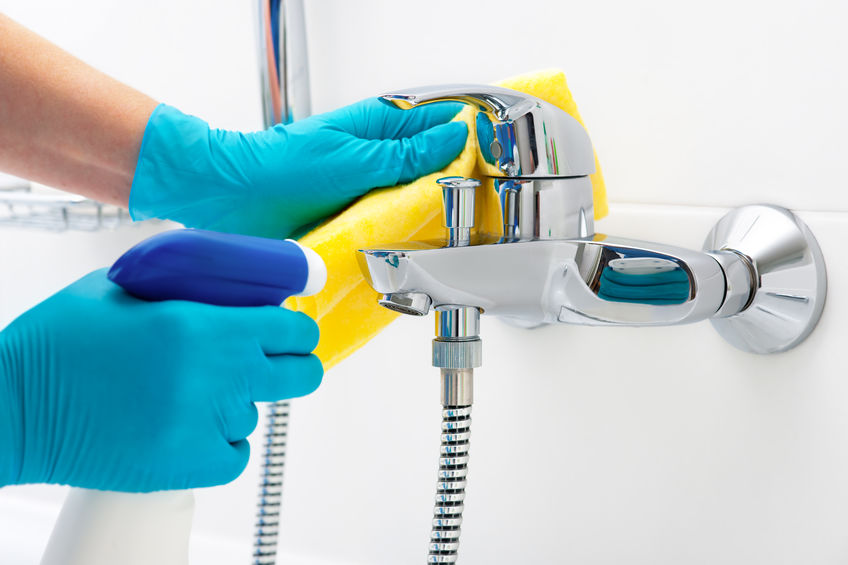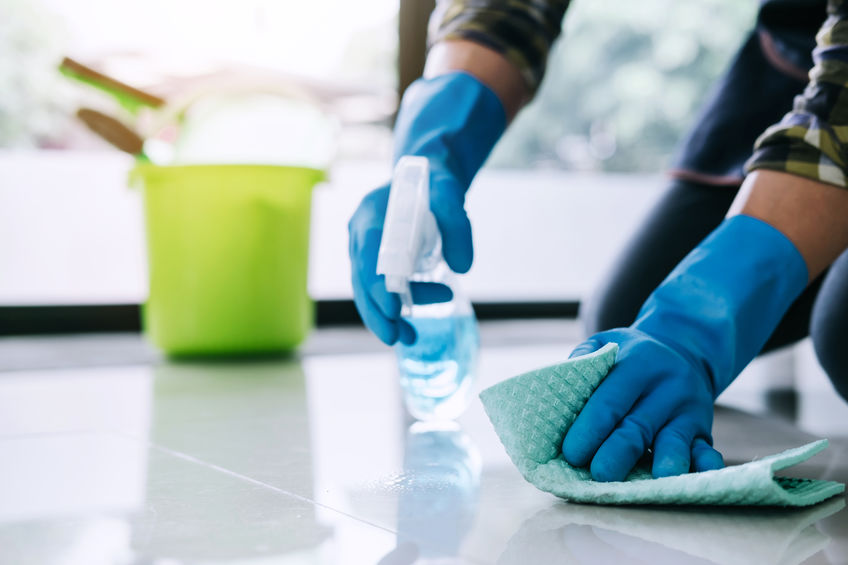Eco Friendly House Cleaning
Today's new specialty surfaces give us myriad choices for floors and counters. However, cleaning them poses a problem, especially for those who prefer eco-friendly house cleaning.
Fortunately, manufacturers are keeping pace and creating "earth-friendly" cleaners. Now, we can keep germ-magnet rooms like the bathroom and kitchen clean without endangering the family.
The key to safe cleaning is providing adequate ventilation, wearing gloves, and avoiding eye exposure to cleaners and fumes - "natural" or otherwise.
Cleaning Ingredients to Steer Clear Of
To further minimize your family's exposure to chemicals, steer clear of individual ingredients in both green and commercial cleaners, including:
- Ammonia (in glass cleaners)
- Glycol and butyl ethers (in several popular all-purpose cleaners)
- Terrenes (a chemical in virtually all citrus or natural cleaners)
- Formaldehyde, phosphates, and perfumes.
These chemicals can cause eye, nose, and throat irritation, nausea, and headaches in the short term. Long-term exposure can damage the liver, kidneys, and the central nervous system.
So, which products should we look for? This surface-specific guide can help you choose the right eco-friendly house cleaning products for the job.
Eco Friendly House Cleaning for Bathrooms
- Cast iron sinks. To safely clean cast-iron sinks and lavatories, rinse with water and dry thoroughly after each use. For stubborn stains, abrasives such as washing soda and borax are excellent alternatives to chemical cleaners. Use a lemon half to scrub out mild stains.
- Ceramic tile. Scrub ceramic tiles and countertops with a nonabrasive natural cleaner, such as baking soda mixed with water, and rinse thoroughly with clean water. The easiest and safest way to keep tiled shower walls clean is to wipe them down with a towel after each use. To clean stained or mildewed grout, apply diluted bleach (3/4 cup bleach to 1 gallon of water) and rinse thoroughly.
- Marble. Avoid using acidic or abrasive cleaners on this delicate, highly polished surface. Also, avoid spilling acids on marble, as pitting and staining can result. Wipe up spills immediately, and use a product formulated for cleaning marble, such as Marbamist from Stone Care International, Inc., available online at Amazon.com and other retailers.
Green Kitchen Cleaning
- Laminate floors. For those who don't mind extra scrubbing, vinegar, water, and liquid dishwashing detergent work well for the general cleaning of laminate flooring and countertops. To remove tough spots or stains, buff the blemish with acetone name polish remover, then wipe clean with a damp cloth.
- To kill countertop germs, use a nonabrasive disinfectant weekly, such as a bleach and water solution.
- Vinyl floors. Vinyl floors often require only regular sweeping and damp mopping with water. However, a cleaner with a surfactant will provide regular cleaning and drying for those dirty jobs. For regular weekly cleaning, use a water-based, neutral cleaner.
- Hardwood floors. Whether yours are oak, maple, ash, or beech, cleaning them is as safe as possible. Vacuum or dust mop once weekly and wipe up spills immediately - standing water can warp wood. Avoid oil soaps; they can build up and create problems. Instead, neutral pH cleaners made specifically for wood floors are best.
- Solid surfaces. Solid surfaces with brand names such as Aconite and DuPont Corian are among the most popular for kitchen counters and backsplashes. These surfaces should be cleaned with a damp cloth, ordinary household soap, or a non-abrasive mild cleanser. For extra safety in the kitchen, disinfect countertops weekly using an EPA-certified disinfectant or a bleach and water solution that is safe for the surface.
- Clean Home
- Green Cleaning
- Eco Friendly House Cleaning






